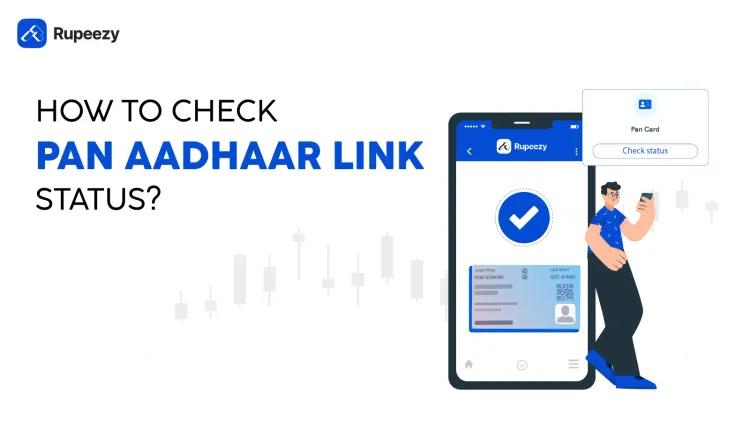Types of Money Market Instruments in India


00:00 / 00:00
Every investment that an investor makes is not always for the long term. There are a few investments that are done with the aim of getting returns in the short term as well. In fact, sometimes these investments aim to part funds in options with the facility to help you meet short-term needs. This is where money market instruments are used.
These are the tools in the stock market that help with short-term lending and borrowing. This not only offers efficiency but also helps with liquidity as well.
From banks to businesses, many rely on these instruments to keep their operations running smoothly. Let’s now understand the instruments of the money market and why they matter.
What are Money Market Instruments?
Money market instruments are short-term financial tools used for borrowing and lending money, usually for a period of up to one year. They are known for their high liquidity, low risk, and fixed returns. These instruments are mainly used by governments, banks, and large corporations to meet short-term funding needs or invest surplus funds safely. These are regulated by financial regulatory bodies like the RBI.
As key instruments of the money market, they include Treasury Bills, Commercial Papers, Certificates of Deposit, and others. Each serves a specific role in ensuring the smooth flow of funds within the financial system.
Features and Objectives of Money Market Instruments
To understand the money market instruments meaning, it is important to understand their features of the same as well. Below are the key features and objectives that define money market instruments:
Short-Term Maturity: Usually have a maturity of one year or less, making them suitable for immediate funding needs.
High Liquidity: Easily bought or sold in the market without affecting their price.
Low Credit Risk: Generally issued by creditworthy institutions, offering safety of capital.
Predictable Returns: Provide fixed or pre-agreed returns, often through discounting.
Electronic Format: Most are issued and settled electronically for speed and accuracy.
Efficient Cash Management: Help institutions invest surplus funds or cover short-term expenses.
Support Policy Implementation: Used by central banks to regulate money supply and interest rates.
Trusted by Institutions: Commonly used by banks, mutual funds, and corporations for day-to-day liquidity.
Types of Money Market Instruments
While the main aim of the money market instruments in India is to help with easy lending and borrowing, it is important to know their types as well. Each of these types plays a unique role when it comes to usability and working.
To better understand, here is the list of money market instruments that you must know:
Instrument | Typical Issuer | Maturity Period | Key Purpose |
Treasury Bills (T-Bills) | Government of India | 91, 182, 364 days | Govt. short-term funding, risk-free asset |
Commercial Paper (CP) | Corporates, FIs | 7 days to 1 year | Corporate working capital, higher yield |
Certificates of Deposit (CDs) | Banks, FIs | 7 days–1 year | Bulk deposit, higher returns vs. savings |
Repurchase Agreements (Repo) | Banks, FIs | 1–14 days typical | Interbank borrowing, liquidity management |
Call/Notice Money | Banks, Dealers | Overnight–14 days | Interbank liquidity management, very short term |
Banker’s Acceptance | Corporates (via banks) | Up to 1 year | Trade finance, less widely used |
So, now that you know the money market instruments list, let us explore the features and details of each of these in a proper manner here.
1. Treasury Bills (T-Bills)
Treasury Bills are short-term debt instruments issued by the Government of India to meet temporary funding needs. Managed by the RBI, they are considered the safest money market instruments and are widely used by public sector banks and other financial institutions.
Key Features
Maturity: 91, 182, or 364 days
Issue Format: Sold at a discount, redeemed at face value
Interest: No periodic interest; returns from price difference
Risk Level: Virtually risk-free, backed by the government
Liquidity: Easily tradable in the secondary market
2. Commercial Paper (CP)
Commercial Paper is a short-term, unsecured debt instrument issued by large corporations to meet working capital or short-term funding needs. It is issued at a discount and does not offer interest, but the return is realized on maturity. Only companies with strong credit ratings can issue CPs.
Key Features
Maturity: 7 days to 1 year
Issuer: Corporates with strong credit profiles
Issue Format: Sold at a discount, no interest payout
Risk Level: Higher than T-Bills, depends on issuer's credit
Liquidity: Tradable in the secondary market, but less liquid than T-Bills
3. Certificates of Deposit (CDs)
These are fixed-term deposit instruments issued by banks and financial institutions to raise short-term capital. They offer a fixed interest rate and are considered a safer option than corporate-issued securities. CDs are used by institutions and individuals looking for stable returns over the short term.
Key Features
Maturity: 7 days to 1 year (for banks); up to 3 years (for FIs)
Issuer: Scheduled commercial banks and financial institutions
Interest: Fixed interest paid on maturity
Risk Level: Low, but depends on the issuing bank’s stability
Liquidity: Can be traded, but may carry penalties on early withdrawal
4. Repurchase Agreements (Repo)
Repos are collateral-backed short-term borrowing tools where one party sells securities with an agreement to repurchase them later at a set price. They are mainly used between banks and financial institutions to manage short-term liquidity and are governed by RBI regulations.
Key Features
Maturity: Overnight to 14 days
Collateral: Government securities used as backing
Interest: Difference between the sale and repurchase price
Risk Level: Low, due to collateral backing
Liquidity: Highly liquid and used extensively by banks
5. Call/Notice Money
Call and Notice Money markets facilitate short-term lending and borrowing between banks. Call money is repayable within one day, while notice money has a tenure of up to 14 days. These are mainly used by banks to manage daily cash reserve needs and short-term mismatches.
Key Features
Maturity: Call (1 day), Notice (2–14 days)
Participants: Banks and financial institutions only
Interest: Fluctuates daily based on liquidity conditions
Risk Level: Low, among regulated entities
Liquidity: Extremely liquid, suitable for overnight adjustments
6. Banker’s Acceptance (BA)
A Banker’s Acceptance is a time-bound promise by a bank to pay a specific amount at a future date. It is commonly used in international trade transactions where exporters prefer the security of a bank guarantee. Once accepted, the instrument can also be sold in the secondary market.
Key Features
Maturity: Typically up to 180 days
Issuer: Drawn by importers, accepted by banks
Usage: Mostly in trade finance and import-export deals
Risk Level: Depends on the accepting bank’s creditworthiness
Liquidity: Tradable, but not as widely circulated as other instruments
Things to Consider Before Investing
Investing in various money market instruments can offer safety and liquidity, but careful evaluation is essential to make the right choice. These instruments differ in terms of issuer, return structure, and accessibility. Here are some key factors to keep in mind before investing:
Match the maturity period with your short-term financial goals.
Check the issuer’s credit rating to assess default risk.
Understand whether returns come from interest or discount pricing.
Ensure the instrument offers enough liquidity for early exit if needed.
Consider the tax implications on interest or capital gains.
Verify if the minimum investment amount suits your budget.
Prefer regulated instruments for better transparency and safety.
Compare return potential across various money market instruments before investing.
Conclusion
Money market instruments offer a smart way to manage short-term funds with low risk and high liquidity. They suit investors who prefer capital protection over high returns. From government-backed options like T-Bills to bank-issued CDs, each instrument has its role in meeting short-term financial goals.
So, if you're looking for a reliable way to explore and invest in these instruments, Rupeezy offers a simple and secure platform. Open your account today and get started with safe, short-term investments.
FAQs
Q1. Which money market instrument is ideal for very short-term needs?
Call Money and Repos are best suited for durations of one to fourteen days. They offer high liquidity and are mainly used by financial institutions to manage daily cash flows.
Q2. Can money market instruments be part of an emergency fund?
Yes, instruments like Treasury Bills and Certificates of Deposit can be useful for short-term emergencies due to their safety and fixed maturity.
Q3. Are there any risks in investing in these instruments?
While most are low-risk, some, like Commercial Papers, carry credit risk if the issuer's financial health weakens. It's important to check credit ratings.
Q4. Do money market instruments offer fixed returns?
Some offer fixed interest (like CDs), while others, like T-Bills or CPs, offer returns through discounted pricing and face value redemption.
Q5. What are some common money market instruments examples?
Treasury Bills, Commercial Papers, Certificates of Deposit, Call Money, and Banker’s Acceptances are widely used options.
Check Out These Related Articles |
The content on this blog is for educational purposes only and should not be considered investment advice. While we strive for accuracy, some information may contain errors or delays in updates.
Mentions of stocks or investment products are solely for informational purposes and do not constitute recommendations. Investors should conduct their own research before making any decisions.
Investing in financial markets are subject to market risks, and past performance does not guarantee future results. It is advisable to consult a qualified financial professional, review official documents, and verify information independently before making investment decisions.

All Category










